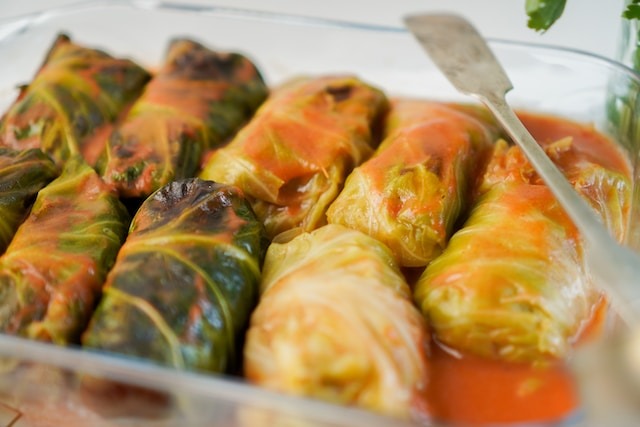Kapustapusto: The Eastern Europe’s Culinary Marvels

Are you tired of the same old dinner routine, longing for a culinary escape that speaks to your adventurous spirit?
Enter the world of “kapustapusto,” a solution to the monotony of mundane meals. Uncover the genuine problem: the search for a dish that not only tantalizes taste buds but also transports you to the heart of Eastern Europe.
Let kapustapusto be the remedy to your gastronomic yearning, promising a symphony of flavors that resonates with the explorer in you.
Introduction
In today’s fast-paced world, culinary escapades have transcended mere necessity, evolving into a means of self-expression and discovery. One such captivating culinary gem garnering attention is “Kapustapusto.” Join us on a gastronomic journey as we explore the origins, preparation, and cultural significance of this unique culinary experience.
What is Kapustapusto?
Let’s commence our exploration by delving into the essence of kapustapusto. More than just a dish, kapustapusto is a cultural phenomenon rooted in Eastern Europe, notably in Ukraine, Russia, and Poland. At its core, kapustapusto is a robust cabbage-based dish, celebrated for its rich flavors and versatility. Its name, loosely translating to “cabbage and stuffing,” provides a glimpse into its primary ingredients.
The Origins of Kapustapusto
To truly grasp the allure of this culinary wonder, we must delve into its historical roots. Kapustapusto finds its origins in the traditional cuisines of Eastern Europe, originating as a humble peasant dish that ingeniously utilized available ingredients like cabbage, grains, and assorted vegetables. This humble beginning mirrors the resourcefulness and creativity inherent in Eastern European culinary traditions.
The Ingredients
Cabbage: Cabbage serves as the cornerstone of kapustapusto, offering a crisp texture and the ability to absorb flavors, making it the perfect canvas for this dish. Typically, blanching or pickling the cabbage enhances its taste.
Filling Variations: Kapustapusto’s beauty lies in its adaptability, with various regions showcasing unique filling variations. Popular choices include rice, mushrooms, minced meat, and even fruits like apples, adding layers of complexity to the dish.
Cooking Kapustapusto
Preparing the Cabbage Leaves: The initial step in crafting kapustapusto involves delicately separating and preparing the cabbage leaves. Blanching softens the leaves, making them pliable for wrapping.
Crafting the Rolls: Once the cabbage leaves are ready, fill them with chosen ingredients. The art lies in achieving a perfect balance of flavors and textures, securing the rolls to maintain their shape during cooking.
Cooking Methods: Various cooking methods, such as simmering in a flavorful broth, baking in the oven, or using a slow cooker, impart distinct tastes to the dish.
Cultural Significance
Kapustapusto transcends mere sustenance; it symbolizes Eastern European culture and tradition. Often prepared during special occasions, it brings families together, turning the act of making it into a bonding experience passed down through generations.
The Modern Twist
In recent years, kapustapusto has undergone a contemporary makeover. Chefs and home cooks alike experiment with innovative fillings and presentation styles, introducing kapustapusto to a global audience as both a cherished tradition and a culinary trend captivating food enthusiasts worldwide.
How to Serve?
Now that you’ve delved into its history and preparation, let’s explore serving this delightful dish for a memorable dining experience.
Presentation: Arrange kapustapusto rolls on a serving platter or individual plates, ensuring a visually appealing presentation.
Garnish: Elevate the aesthetic appeal with a garnish. Fresh herbs like parsley or dill add bursts of color and freshness.
Sauces: Serve kapustapusto with side sauces or condiments. Sour cream complements the rich flavors, while a tomato-based sauce provides a tangy contrast.
Bread: Offer crusty bread or rolls on the side, perfect for soaking up the delicious juices from the kapustapusto.
Sides: Enhance the experience with traditional Eastern European sides like sauerkraut or a simple salad, balancing flavors and textures.
Table Setting: Pay attention to the table setting, using elegant tableware to elevate the overall dining experience.
Share the Story: As you serve kapustapusto, share its history and cultural significance, adding layers of appreciation and conversation to the meal.
Enjoy: Encourage everyone to savor each bite, letting the flavors transport them to the heart of Eastern Europe, where tradition meets culinary excellence.
Where to Find Ingredients
To craft an authentic kapustapusto, sourcing the correct ingredients is paramount. Fresh, crisp cabbage leaves form the base, and options for fillings, from fragrant rice to succulent minced meat, can be found at local markets, specialized grocers, or even in your own garden.
Your choice of ingredients will dictate the flavor profile of your kapustapusto, so select them carefully. With the right components in hand, your culinary journey to create this delightful Eastern European dish will be both rewarding and delicious.
Conclusion
In conclusion, kapustapusto stands as a culinary masterpiece that has withstood the test of time. Its rich history, diverse ingredients, and cultural significance make it a dish well worth exploring. Whether you’re a seasoned chef or a curious food enthusiast, embarking on a journey to create and savor kapustapusto promises an experience that will not disappoint.
Stay connected to our website for more useful information.




